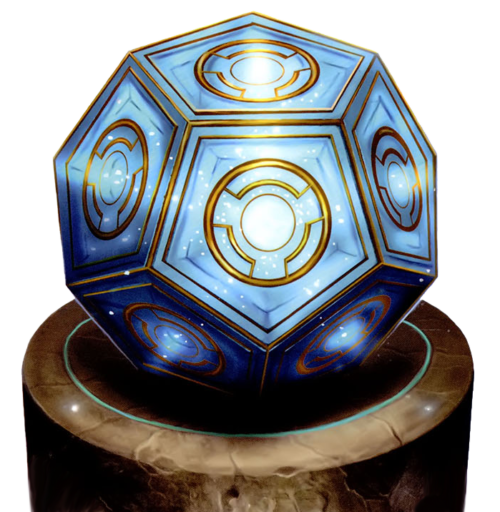
In the expansive galaxy far, far away, the Jedi are known for their unwavering commitment to peace, justice, and the Force. Central to their way of life is the “Code of the Jedi,” a set of guiding principles that shape their actions and decisions. In this article, we will delve deep into the Jedi Code, exploring its significance, and how it has shaped the destiny of these legendary warriors.
Understanding the Code of the Jedi
The Jedi Code, often simply referred to as “the Code,” is the moral and philosophical foundation upon which the Jedi Order stands. It consists of five key principles:
- There is no emotion; there is peace.
- There is no ignorance; there is knowledge.
- There is no passion; there is serenity.
- There is no chaos; there is harmony.
- There is no death; there is the Force.
Jedi Codes refers to various codes of conduct and guidelines that Jedi Knights and Masters follow in their everyday lives. While they may vary in specifics, they all draw inspiration from the fundamental Jedi Code. The primary purpose of these codes is to help Jedi maintain their connection to the Force and ensure they uphold their responsibilities as protectors of the galaxy.
The Jedi Code in Practice
1. There is no emotion; there is peace
Emotion and the Jedi
The Jedi Code emphasizes the suppression of emotions, a practice that distinguishes them from other beings in the galaxy. However, it’s essential to clarify that Jedi are not emotionless automatons; they experience feelings just like anyone else. What sets them apart is their approach to emotions.
- Understanding Emotions: Jedi are taught to recognize and understand their emotions rather than allowing them to control their actions. They acknowledge fear, anger, and love but avoid being consumed by these emotions.
- The Danger of the Dark Side: Emotions can be powerful, and unchecked, they can lead to the dark side of the Force. The Sith, the Jedi’s antagonistic counterparts, are a testament to the destructive force of uncontrolled emotions.
- Seeking Inner Peace: By striving for inner peace and emotional balance, Jedi can make clear, rational decisions. This serenity allows them to act with compassion and selflessness.
The Quest for Peace
The second part of the Jedi mantra, “there is peace,” underscores their ultimate goal: to bring peace to the galaxy. This peace extends beyond the absence of conflict; it embodies harmony, understanding, and the well-being of all living beings.
- Peace as a Guiding Principle: Peace is the cornerstone of Jedi philosophy. They work tirelessly to resolve conflicts, protect the innocent, and maintain stability in the galaxy.
- Balance in the Force: The Jedi believe that emotional peace within themselves leads to balance in the Force. This equilibrium ensures that the dark side does not gain dominance, which could bring about chaos and suffering.
- The Greater Good: Jedi often face difficult choices that test their commitment to peace. They must be willing to sacrifice personal desires for the greater good, even if it means facing personal hardship or loss.
2. There is no ignorance; there is knowledge
The Jedi and the Pursuit of Knowledge
- A Lifelong Journey: For the Jedi, knowledge is a never-ending journey. They dedicate their lives to learning, seeking wisdom in all its forms – from history and science to the mystical aspects of the Force.
- Guardians of Truth: Jedi see themselves as guardians of knowledge and truth. They strive to protect the galaxy from the dark forces that would seek to suppress or distort information.
- Enlightenment Through Understanding: The Jedi believe that knowledge brings understanding, and through understanding, one can achieve enlightenment. This enlightened perspective allows them to make wise and compassionate decisions.
The Role of Ignorance in the Code of the Jedi
To truly grasp the significance of “There is no ignorance; there is knowledge,” it’s important to understand the role of ignorance in the Jedi Code.
- Ignorance as a Source of Conflict: Ignorance often leads to fear, prejudice, and misunderstanding. In the Star Wars universe, these emotions are the breeding grounds for conflict and the dark side of the Force.
- The Dark Side’s Deception: The Sith, the Jedi’s antagonists, exploit ignorance to further their malevolent goals. They manipulate those who lack knowledge, drawing them into the darkness.
- Breaking the Chains of Ignorance: By embracing knowledge, the Jedi break the chains of ignorance. They encourage open-mindedness, critical thinking, and a commitment to uncovering the truth.
Knowledge as a Force for Good
For the Jedi, knowledge is a force for good, a beacon of hope, and a tool to bring about positive change.
- Problem Solving: The Jedi use their knowledge to solve complex problems, mediate disputes, and protect the innocent. They believe that knowledge is a path to resolution and peace.
- Empowerment: Knowledge empowers individuals to make informed choices. Jedi Knights, armed with information and wisdom, are better prepared to face the challenges of their missions.
- Teaching the Next Generation: Jedi Masters pass down their knowledge to their apprentices, ensuring the continuity of wisdom and the preservation of the Jedi way.
3. There is no passion; there is serenity
Understanding the Role of Passion
The Jedi Code’s admonition against passion does not suggest a complete absence of emotion or enthusiasm. Instead, it emphasizes the importance of regulating and channeling one’s emotions wisely.
- Passion and the Dark Side: Passion, when left unchecked, can lead to negative emotions such as anger, hatred, and fear, which are the gateway to the dark side of the Force. The Sith, Jedi’s antithesis, are a testament to the destructive power of unbridled passion.
- Detachment for Clarity: By advocating for serenity over passion, the Jedi encourage detachment from overwhelming emotions. This detachment allows them to think clearly and make decisions based on reason rather than impulse.
- Emotional Resilience: Jedi must possess emotional resilience to overcome personal hardships and adversities without succumbing to despair or anger. Serenity in the face of adversity is a testament to their strength.
The Quest for Serenity
Serenity, the latter part of the mantra, “there is serenity,” represents the state of inner peace and calm that the Jedi strive to attain. It is not a passive state but an active pursuit of emotional balance.
- Embracing Calmness: Jedi seek to maintain a calm and composed demeanor, even in the most challenging situations. This calmness enables them to respond to threats with clarity and precision.
- Clearer Connection to the Force: Serenity is not just a personal state of being; it enhances a Jedi’s connection to the Force. A calm mind allows for a stronger, more harmonious bond with the Force, granting them extraordinary abilities.
- Acting with Compassion: Serenity allows Jedi to act with compassion and selflessness. They are motivated by a desire to protect and serve others, rather than personal gain or vengeance.
4. There is no chaos; there is harmony
Understanding Chaos and Harmony
The Jedi Code’s rejection of chaos in favor of harmony emphasizes the importance of stability, order, and balance in both personal and galactic affairs.
- Chaos Breeds Conflict: Chaos often leads to disorder and conflict. In the Star Wars universe, this chaos is frequently manipulated by dark forces, perpetuating violence and suffering.
- Harmony as the Ultimate Goal: The pursuit of harmony is central to the Jedi way of life. It goes beyond just the absence of chaos; it represents a state of balance, unity, and peaceful coexistence.
- Balance in the Force: The Jedi believe that a harmonious existence helps maintain balance in the Force. An imbalance in the Force can have dire consequences, leading to instability and suffering.
The Jedi’s Role in Preserving Harmony
The Jedi Code not only serves as a personal code of conduct but also guides their actions as they strive to bring balance and harmony to the galaxy.
- Peacekeepers: Jedi act as peacekeepers, mediating disputes, and resolving conflicts. They work tirelessly to maintain order and protect the innocent from the chaos of the galaxy.
- Guardians of the Balance: Jedi see themselves as guardians of the balance in the Force. They are tasked with preventing the dark side from overwhelming the light and restoring balance when it is disrupted.
- Leading by Example: By embodying harmony in their own lives, Jedi inspire others to seek balance and work towards a more harmonious existence.
5. There is no death; there is the Force
The Nature of the Force
Before delving into the concept of “There is no death; there is the Force,” it’s crucial to understand the Force itself.
- The Force as a Cosmic Energy: The Force is a mystical, all-encompassing energy field that flows through and connects all living things. It is the source of a Jedi’s power and wisdom.
- The Light Side and the Dark Side: The Force has two aspects—the light side and the dark side. The Jedi embrace the light side, which represents peace, harmony, and selflessness. Conversely, the dark side embodies aggression, anger, and selfishness.
- Eternal and Unifying: The Force is eternal, and it binds all living beings together. It transcends death, offering the potential for a continued existence beyond the physical realm.
“There is No Death; There is the Force”
The Jedi Code’s assertion that “There is no death; there is the Force” reflects the Jedi’s unique perspective on mortality and the afterlife.
- The Immortality of the Force: Jedi believe that when they die, they become one with the Force, merging their individual consciousness with the greater cosmic energy.
- A Transformative Journey: The Jedi’s transition into the Force is seen as a transformative journey, a natural part of the cycle of life. It is not feared but embraced as a return to the source from which all life emanates.
- Guidance for the Living: The belief in the eternal nature of the Force provides Jedi with a sense of purpose and a reason to act selflessly. They strive to protect and preserve life, knowing that all beings are connected by this universal energy.
The Philosophy of the Jedi
The Jedi Code’s perspective on death and the Force embodies their broader philosophy of selflessness, duty, and the pursuit of balance.
- Selflessness: Knowing that they will become one with the Force, Jedi are motivated by a selfless desire to protect and serve the greater good, even at the cost of their own lives.
- Duty and Sacrifice: The Jedi are duty-bound to use their abilities to maintain peace and harmony. They willingly sacrifice their personal desires for the well-being of others.
- Balance: The belief in the eternal nature of the Force reinforces their commitment to maintaining balance between the light side and the dark side, ensuring that darkness does not consume the galaxy.
The Jedi Code and the Force
The Jedi Code is deeply intertwined with the Force, the mystical energy field that binds the galaxy together. By adhering to the Code, Jedi can tap into the Force’s power, granting them extraordinary abilities like telekinesis, enhanced agility, and heightened intuition.
The Force, as mentioned in the Jedi Code, represents the spiritual essence of all living things. Jedi see themselves as guardians of this energy and strive to keep it in balance. The Code reminds them that death is not the end but a transition, reinforcing their connection to the Force and their duty to protect it.
Conclusion
The Code of the Jedi serves as a moral compass for these noble warriors, guiding them on their path to enlightenment and selflessness. In a galaxy often filled with chaos and darkness, the Code of the Jedi stands as a beacon of hope and a testament to the enduring power of the Force.
As we’ve explored, the jedi code is not only an essential element of Star Wars lore, but also a meaningful symbol of timeless wisdom. The Code continues to inspire generations, both in the Star Wars universe and beyond. May the Force be with you as you embrace its teachings.
Related: The Force Within Nomi Sunrider: Path to Jedi Mastery



















